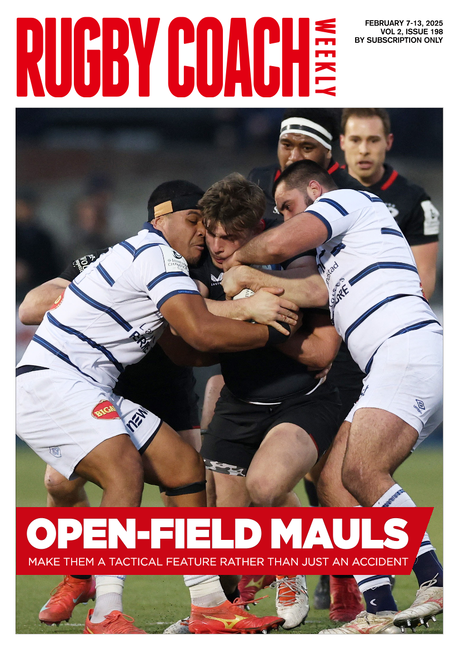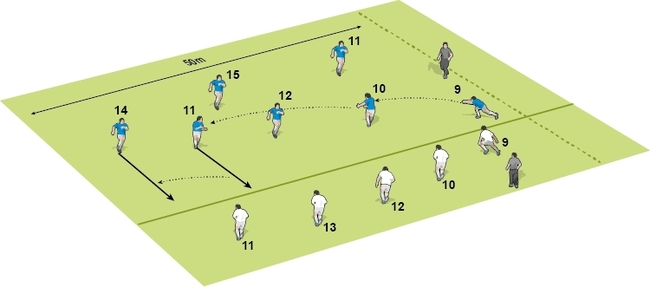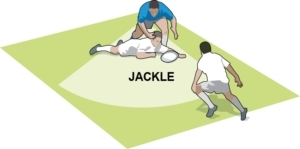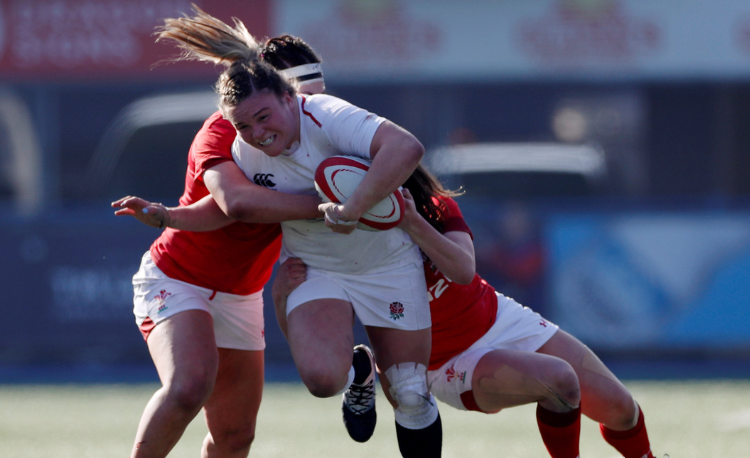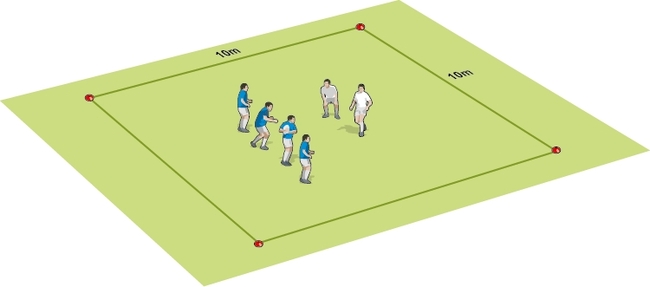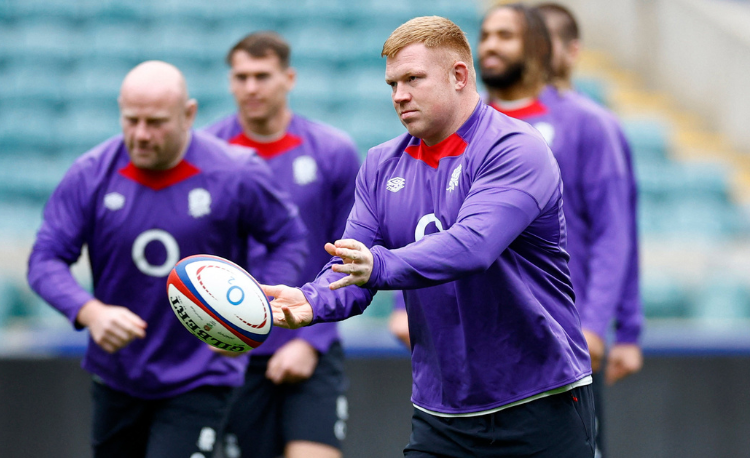Good and bad reasons to take contact
Expose weak defenders by taking contact. This creates opportunities to isolate them in the defensive line and then attack them through that channel.

The “heart” of the defence is a point of strength for any team. A strong “heart” defensive system allows other systems of a defensive policy to be deployed, like line speed and drift, which in essence, cuts down the attacking options of the opposing team.
As an attacking team, we need to soak up that line speed, or find a way to break down their defensive system. For a start, we look to move the point of contact away from their strength. In simple terms, we want to attack the “unexpected” defenders or their weakest defenders, who might well be the fifth or sixth position in the ruck defence chain.
We can do this by grouping the defence and spreading the ball - fixing the defence, because they must stay in their system - and move the ball towards the unexpected defender.
GROUPING THE DEFENCE
Inevitably, your ball carriers will take contact. In fact, they may seek contact. There are three main reasons why they look to run at a defender, two of which need correcting, the other which is a tactical play. We need to distinguish between them.
TWO BAD REASONS TO TAKE CONTACT
1. The ball carrier does not have the skills to move the ball before contact. Added to that, they are not positively encouraged to avoid contact. To remedy this, we need to work on their awareness of where the weaknesses are in a defensive line or defender and how they can be exploited.
2. The ball carrier has the wrong mentality about taking contact. He wants to carry into the middle in the defender, to take him on, rather than attack the soft shoulder and edges of the defender.
ONE GOOD REASON TO TAKE CONTACT
Sometimes it is necessary to take contact. It‘s not because the player simply thrives on contact, doesn’t have the skills to avoid it, or the defence is better at getting in the way. It’s necessary because it’s a means to an end. It’s about grouping the defence and utilising quick ball into space.
WHAT IS NECESSARY CONTACT
Necessary contact is when you want to set up a particular contact point in the opposition defensive system to expose a weakness elsewhere, or the defending team cannot get their defensive system in place quick enough to negate your attack.
Contact can also group a weaker defensive team knowing they must send more support players in to stop a rampaging attacking team, leaving spaces elsewhere. If a team has a front-line defence mentality with a tackle-only system, you may need to take contact to ensure they send necessary defenders in to stop your momentum.
In this system, you will find the team that makes one-on-one tackles, not overcommitting to the ruck, relying totally on individuals to make sound defensive tackles and decisions, ensuring the defensive line stays intact. This is where you can exploit weaker or slower defenders and system errors.
Necessary contact is not attacking the defender front-on. Instead, the ball carrier attacks a weak shoulder, which in turn draws more defenders into the tackle to try and halt the attack. With more than one defender stepping in, the defence will have fewer players on their feet around the tackle, and will need to send wider out defenders in to secure their “heart” defence. This will give space out wide to attack.
HOLD AND THEN ATTACK
Defensive systems around the ruck are pretty standard. The first three players next to one side of the ruck have specific roles, which I call the heart of the defence. Outside these players, the roles become less defined.
Once we reach the fifth and sixth defender, they are not so likely to be involved in the thrust of the defensive system, especially against teams who run a 1v1 attacker/ tackler and tackle assist system. If you watch footage of games, you will see they often do not come forward as fast as the other players, or keep their shape.
To exploit these players, we need to engage and hold the first four defenders and then move the ball into the spaces in front of the fifth and sixth defender.
Related Files
Newsletter Sign Up
Coaches Testimonials

Gerald Kearney, Downtown Las Vegas Soccer Club

Paul Butler, Florida, USA

Rick Shields, Springboro, USA

Tony Green, Pierrefonds Titans, Quebec, Canada
Subscribe Today
Be a more effective, more successful rugby coach
In a recent survey 89% of subscribers said Rugby Coach Weekly makes them more confident, 91% said Rugby Coach Weekly makes them a more effective coach and 93% said Rugby Coach Weekly makes them more inspired.
Get Weekly Inspiration
All the latest techniques and approaches
Rugby Coach Weekly offers proven and easy to use rugby drills, coaching sessions, practice plans, small-sided games, warm-ups, training tips and advice.
We've been at the cutting edge of rugby coaching since we launched in 2005, creating resources for the grassroots youth coach, following best practice from around the world and insights from the professional game.

